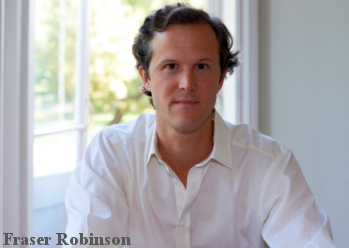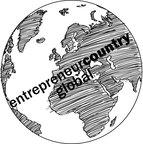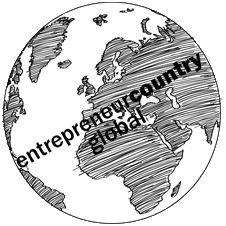The Tech Start-Up Enabling The Publishing World
entrepreneurcountry Speaks to Fraser Robinson, Founder of Taggstar
Any publisher who has taken note of the digital revolution knows that content analytics in all shapes and forms, from social media monitoring to web analytics, has completely transformed their business model. Today, media titles know more about their audiences than ever before, and are able to refine their offering as a result.
 However, data isn’t useful unless you know how to make sense of it and can build a plan that allows you to monetise on this new information. This understanding is now vital, with each reader becoming a powerful asset if you are able to take advantage of a host of innovative digital technologies that will allow you to refine your offering. Also, understanding of 'Ecosystem Economics™' and how you can operate as a digital entrepreneur, selling into large industries and creating a business model where all shareholders win - the media house, the consumer and the entrepreneur - is paramount.
However, data isn’t useful unless you know how to make sense of it and can build a plan that allows you to monetise on this new information. This understanding is now vital, with each reader becoming a powerful asset if you are able to take advantage of a host of innovative digital technologies that will allow you to refine your offering. Also, understanding of 'Ecosystem Economics™' and how you can operate as a digital entrepreneur, selling into large industries and creating a business model where all shareholders win - the media house, the consumer and the entrepreneur - is paramount.
One such offering that demonstrates Ecosystem Economics™ in action is London-based start-up called Taggstar. Founded in 2010 by Fraser Robinson (pictured), once commercial director at LastMinute.com, Taggstar brings website images to life by allowing publishers to add layers of content onto each picture, making them interactive and shareable. Taggstar also allows publishers to build features around their images, as well as include related links and multimedia content inviting readers to engage on a deeper level with the visual content on the page. The company is already working with media partners such as MSN, Sky Living, The Telegraph, Hearst Magazines and The Independent so to find out more, I spoke to Fraser on his start-up story and future plans for the business.
What were you doing before launching Taggstar?
Fraser: I began my career as an Investment Banker for Morgan Stanley in the US working on M&A, which gave me my first taste of technology. I then founded my first start-up in the late nineties in the online government space and spent some time between that and working in Hong Kong for Sure Media, which is a content, finance and production business. I was distributing and producing film content for outer Asia, so there was a little bit of shifting gears for a little while. I was then given the opportunity to join Lastminute.com, so the majority of my career has been a mix of big institutions and small start-ups.
What key lessons did you pick up during your time at Lastminute.com?
Fraser: I think Lastminute.com was probably one of the best digital experiences I’ve ever had. It was a large business with lots of people but with an entrepreneurial heart, which meant I was able to exist within a business that was performing, that was large, had revenue behind it as well as a quality team of fantastic technologists. I was able to learn from people who were really strong in the digital space and it really taught me the ways of e-commerce, the ins and the outs of digital marketing, how to drive data to better use and how to engage with customers online. It gave me a full digital education.
What then inspired you to launch Taggstar?
Fraser: When the internet first began it was a very low bandwidth environment which lent itself to very limited content distribution. So the internet largely grew up around text because text is low weight and you’re able to view text very easily. However, as images began to proliferate more online I realised that images are largely a dark spot on a web page with very little information being understood about a particular image. The irony of course is that images are typically the most engaging piece of content on a page, so I spotted this bizarre situation where the most interesting, most valuable piece of content was also the least understood.
That to me was what inspired Taggstar, a business that has the aim of uncovering that hidden value in interpreting images, understanding them better and exploiting their value. What’s happened in the last 5 years is that the dynamic of the webpage has changed, pictures get bigger and bigger and there are fewer words, which means more real estate but still no understanding of what that image is doing. We are trying to address that gap.
You have recently received investment from Ariadne Capital’s ACE Fund. How have they supported Taggstar so far?
Fraser: Ariadne Capital Founder Julie Meyer has been a huge asset because she has an incredible network and is very insightful. As an entrepreneur in the start-up stage you can invest a great amount of time trying to meet people, but if someone can open those doors you can grow the business a lot faster. Ariadne has introduced us to their community, helped us to broaden our network and meet other businesses that we can ally ourselves to. They are on the ground, advisory investors who really like to get involved and talk to me as an entrepreneur, because they have all been entrepreneurs themselves. Having that sounding board from people who are more experienced than you is so valuable. I am incredibly thankful.
What are your hopes for Taggstar in the foreseeable future?
Fraser: We want to be the global leader in providing publishers with the tools and insights to help them make the most out of their images. We want to help them manage their costs better, extract more revenue out of each page and possibly even transform the way images are licensed online. I would love to see if we can get to a point where publishers can license images on a per view basis rather than a flat fee, all-you-can-eat model, with real performance based, usage-based, metre-based pricing.
What advice do you give to disruptive tech entrepreneurs?
Fraser: A lot of people try to disrupt in part to beat up the incumbents. My advice would be try to work with them – they have a huge amount of value and experience and a lot of the time you’ll get a lot further if you try to work with those whose vertical you are trying to change or influence. There is often more of a desire to disrupt destructively than to disrupt productively and I think it’s always a good thing to learn from people who have been in that space for a long time. Napster is a good example – they tried to break the music industry but all they did was force it to change faster, which is a good thing, but the businesses that have worked in collaboration with the music industry are the ones that have survived. Steve Jobs didn’t go out and say ‘I’m going to try and kill the music industry’ - he tried to work with it. Napster tried to break it and very rarely that works – you’re swimming against too strong a current.
- Tags: blog, business tips, entrepreneurcountry, entrepreneurs, featured, Kelly Dolan, media, taggstar

